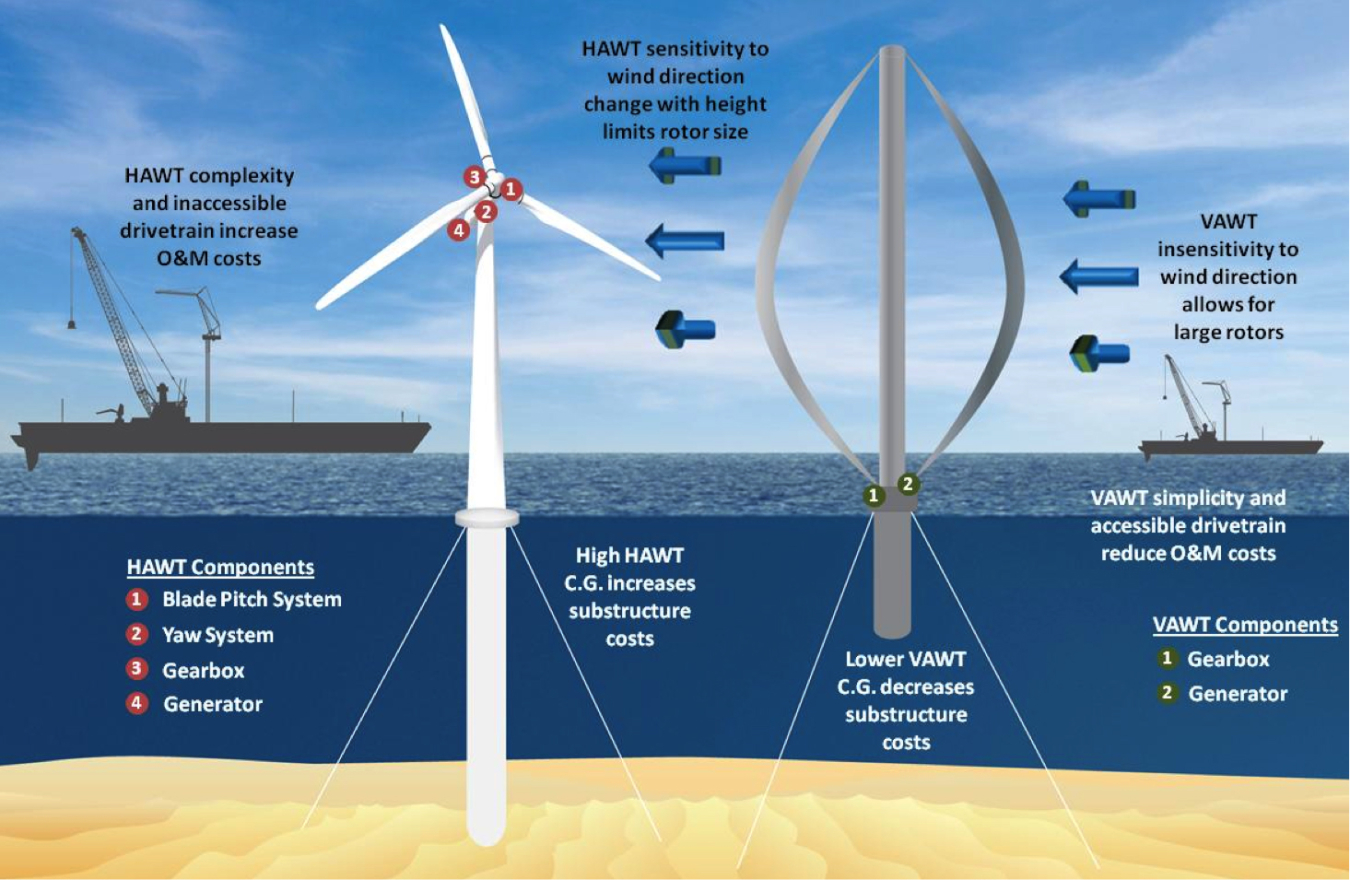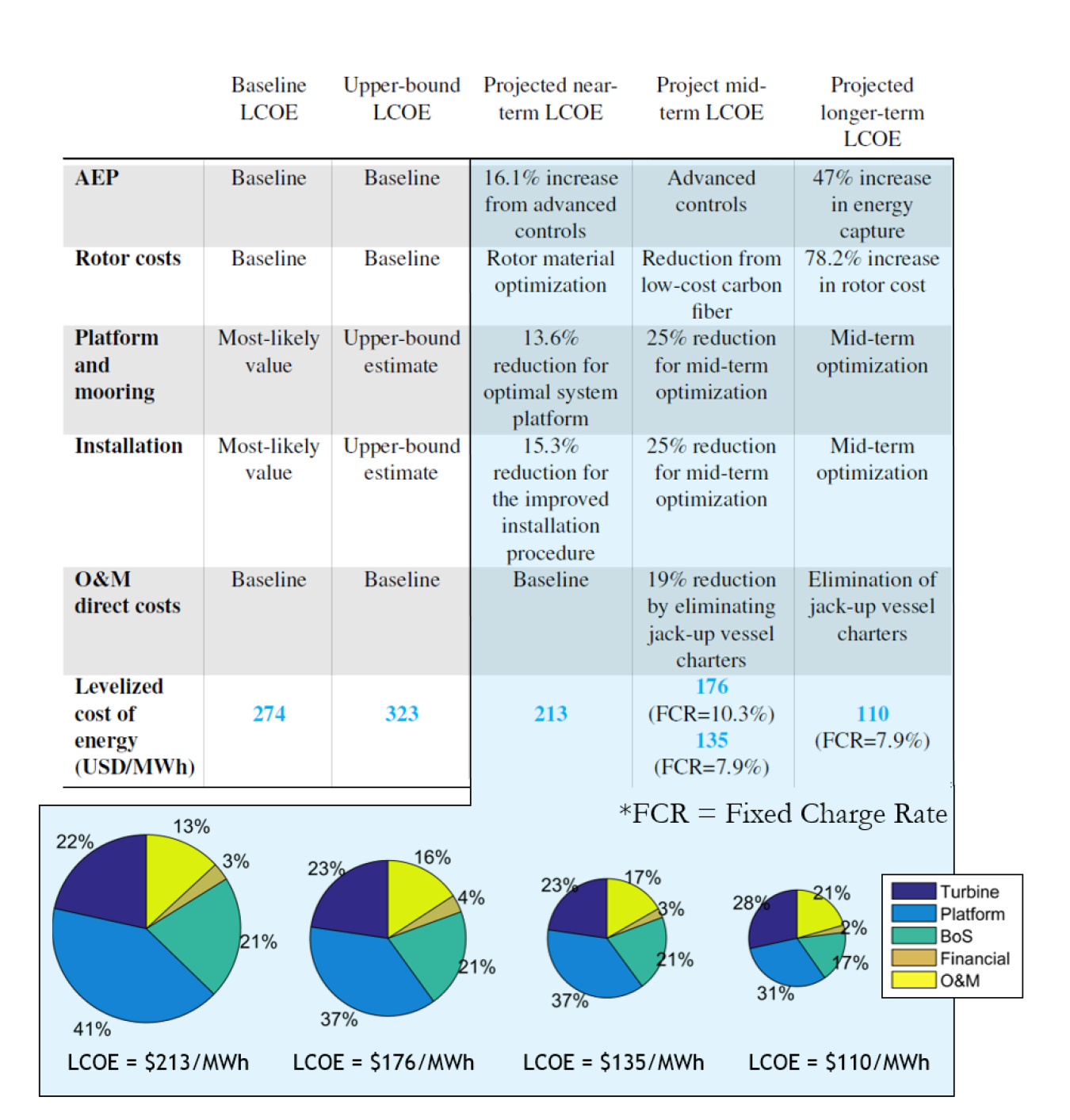A new study by Sandia National Laboratories looks at the feasibility for deep-water offshore installations of a less-common wind turbine design.
Wind Energy Technologies Office
October 12, 2018Sandia Study Provides Insight into Technical and Economic Feasibility of This Less-Common Turbine Design

In deepwater, vertical-axis wind turbines (VAWTs) have inherent advantages, including a lower center of gravity (or "C.G."), over horizontal-axis wind turbines (HAWTs), as illustrated in this graphic.
A new study by Sandia National Laboratories (Sandia) provides a window into the technical and economic feasibility for deep-water offshore installations of a less-common wind turbine design: the vertical-axis wind turbine, or VAWT, as opposed to the horizontal-axis wind turbines commonly seen on and off shore.
The study identified an optimized system design to produce system levelized cost of energy (LCOE) estimates for five potential scenarios, such as what the LCOE might look like today, or what the cost might become as the technology matures. The LCOE projections for the optimized system in the study reflect an updated, in-depth analysis of new technology, system optimizations, and other factors related to VAWT designs.
Overall, the research predicts that LCOE could be as low as $110 per megawatt-hour if the system includes anticipated technical advancements to reach an optimized design. The projected near-term LCOE, or what the system is estimated to cost today, was predicted to be $213 per megawatt-hour (MWh). The most significant contributors to a reduced cost? An optimized platform design, advances in materials and rotor structural design, control strategies to optimize energy generation, and a reduced finance rate equivalent to that of land-based wind turbines.
While the VAWT design has been studied in the United States since the 1970s, the initial designs studied were smaller, which was a disadvantage for VAWTs because they did not perform as well as horizontal axis designs at smaller scales. Additionally, composite materials were uncommon. Studies produced by Sandia at the time relied on segmented aluminum blades, which were prone to fatigue.
Now, the larger scale of offshore wind turbines and improved materials indicate that VAWT designs may have certain advantages and benefits for floating offshore wind energy installations. For instance, VAWT designs have a lower center of gravity, which would reduce the platform costs.
The larger scale of offshore wind turbines and improved materials indicate that VAWT designs may have certain advantages and benefits for floating offshore wind energy installations.
"From a systems perspective, that could be a huge breakthrough for floating offshore wind, where the platform is the single largest contributor to the system cost," said Brandon Ennis, Sandia's Wind Energy Technologies Department offshore technical lead. "The turbine represents approximately 65% of the system cost for land-based wind plants, compared to only around 25% for deep-water offshore sites. This distinction opens up the opportunities for radically different wind turbine designs than what would be developed for land-based applications, which could significantly reduce the cost for floating offshore wind energy."
As shown in the study, the reduced platform cost for the VAWT design decreased the LCOE, although a direct comparison to horizontal-axis design is merited to better understand the relative LCOE comparison.

The current report represents an effort to apply comprehensive cost data to a representative site and optimized design—outlining how an optimized VAWT system may impact LCOE and providing the cost data to understand the role of VAWTs in developing the vast energy resources available offshore.

